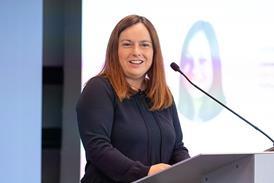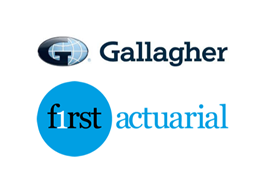There is a lot to digest from the recent Pension Schemes Bill. Wedlake Bell’s Justin McGilloway breaks down the key considerations and action points for small employers.

The Pension Schemes Bill marks a significant shift in the landscape of workplace pensions.
While the reforms aim to modernise and streamline the system, they also bring new responsibilities and opportunities for employers – particularly small and medium-sized enterprises (SMEs).
Alongside the bill, the government has released a ‘workplace pension roadmap’ setting out a broad timeline for bringing the changes into force. The roadmap suggests that the aim is for the bill to be given Royal Assent at the start of 2026, but here’s what SMEs need to know now.
Unlocking surpluses in defined benefit schemes
One of the headline changes is the easing of rules around surplus extraction from defined benefit (DB) pension schemes. Currently, only DB schemes that passed a ‘section 251’ resolution by April 2016 to preserve a power to access surplus are able to do so while the scheme is ongoing.
The draft provisions remove the need for a section 251 resolution – although section 251 resolutions that were passed remain valid. They also introduce a new power to amend scheme rules where there is no surplus repayment power or, where such a power exists, to remove or relax any restrictions imposed by the scheme on the exercise of that power.
For SMEs with legacy DB schemes, this could be a financial lifeline. Reclaiming surplus assets (even with a 25% tax charge) may free up capital for reinvestment, innovation, or debt reduction – offering a rare win in the burdensome world of pension liabilities.
Three quarters of trustees are open to using surplus release power

DB superfunds
The bill also sets out a regulatory framework for DB superfunds – consolidator pension schemes that receive assets and liabilities from closed defined benefit occupational pension schemes, and are supported by third-party investor capital instead of (or as well as) employer covenant.
This development could be particularly attractive to SMEs that struggle with the long-term costs and risk of running their own DB schemes.
By transferring to a superfund, employers can reduce their exposure to pension risk while ensuring members’ benefits are protected.
A consultation is expected in 2026, with regulations to come into force in 2028.
Value for money in DC
Defined contribution (DC) pension schemes, now the dominant form of workplace pension, are also undergoing major reform.
The government is introducing a ‘value for money’ framework that will assess schemes based on performance, fees and member outcomes.
For SMEs, this means greater scrutiny of the pension providers they use. Employers will need to ensure their chosen schemes meet these new standards or risk being required to switch to better-performing alternatives.
Fundamentally, the goal is to ensure that employees get the best possible retirement outcomes.
DC decumulation and member support
Another key change is the requirement for schemes to offer a “default decumulation” option. This is essentially a built-in retirement income solution for members who don’t make an active choice.
Regulations on these guided retirement products are expected to be introduced in 2026 or 2027, and to take effect in 2027.
In deciding what solution a pension scheme should make available, the trustees or pension managers must take account of factors including the needs and interests of the scheme’s membership and the circumstances of different members.
Trustees and managers will be required to publish a “pensions benefits strategy” setting out steps to ensure that they understand the requirements of eligible members and their default solution to take account of those needs.
Employers will therefore need to ensure their pension schemes are compliant and that employees are aware of the support available.
Tackling the small pots problem
The Pension Schemes Bill also addresses the growing issue of “small pots” – tiny pension accounts left behind when employees change job.
DC pots of £1,000 or less that have not had any contributions paid into them for a period of at least 12 months will be transferred to a consolidator scheme (a master trust authorised by TPR to act as a consolidator, or a provider regulated by the Financial Conduct Authority).
This reform is expected to reduce administrative costs and improve member outcomes. For SMEs, it means fewer dormant accounts to manage and a more streamlined experience for employees.
Scaling up DC pension schemes
The bill will introduce a requirement that master trusts and group personal pension providers used for auto-enrolment must have a “main scale default arrangement” or ‘megafund’, with a minimum level of assets under management of £25bn by 2030.
This will be subject to exceptions set out in regulations, and there will be a “transition pathway” for providers or master trusts that have yet to reach this size.
What should SMEs do now?
While many of the reforms are phased in over the next five years, SMEs should begin preparing now. Key steps to take include:
- Reviewing pension providers to ensure they meet upcoming value for money standards;
- Engaging with trustees if you operate a DB scheme, especially regarding surplus extraction;
- Planning for guided retirement and default options with your provider; and
- Monitoring developments around superfunds and small pot consolidation.
The Pensions Schemes Bill is a bold step towards a more efficient and member-focused pension system. By staying informed and proactive, employers can not only remain compliant but also enhance the retirement outcomes of their workforce.
Justin Gilloway is head of pensions and employee benefits at Wedlake Bell.






















